Gimme Kraft and effective climbing training. Interview with the author Patrick Matros
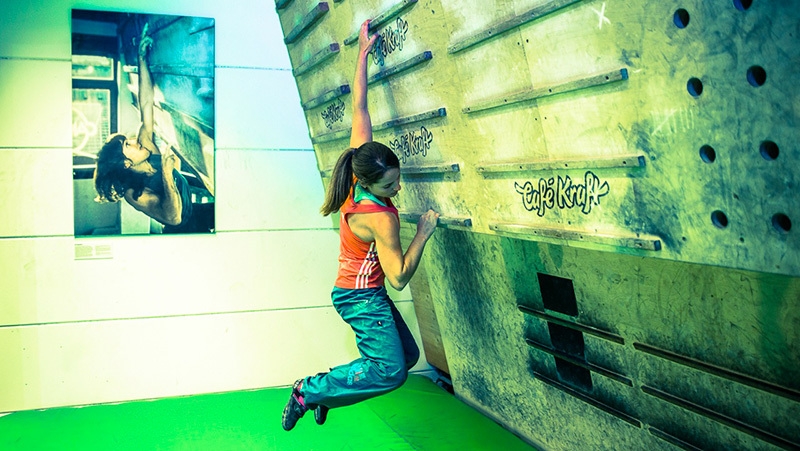
 1 / 6
1 / 6 archive Gimme Kraft
archive Gimme Kraft
It focuses on a very specific aspect of climbing: strength. Strength should be trained for in a complex and balanced manner. Above all though, training should be fun! This is the main message of the book. First and foremost it's a collection of exercises with a DVD. Add to this the theoretical introduction to strength training, that didn't fit into the book and that can therefore be downloaded as a pdf. In addition, we interviewed a series of top climbers to show how many different paths lead to success. Last but not least the DVD also contains some previously unpublished images of Wolfgang Güllich training: a historic document therefore!
Talking about Güllich. At the start of the '90's he really left his mark, thanks also to the Campus Board he developed. How has training changed over the years? And what have you trainers learnt from us
climbers?
Climbing has evolved considerably during the last 20 years. It's still on the way from a fringe sport to a mainstream sport. The aura it once had of being something extreme can only be attributed to a few facets, such as trad climbing. Climbing's growth in popularity has brought with it an increase in the number of people who want to perform at a high level. More and more people provide this sport with creative ideas, and science has also begun to examine climbing and bouldering more carefully. This obviously results in an evolution of the sport and the training methods. I don't in any way want to say that the climber who trained 25 years ago did so without a systematic approach. If you look at performances such as the first ascents of Action Directe or Open Air, then the question arises as to whether these climbers were absolute natural climbing talents or whether they owed much of their success to a systematic and specific training regime. I believe the latter. Having said that, our knowledge about training has evolved significantly. Training has focussed more and more on the specific target movements, mainly thanks to the numerous bouldering and climbing walls that have sprung up everywhere. This is how, slowly but surely, the sport's secrets are revealed!
Likewise, today's exceptional talents show the way forward and have proven one thing: that continuous variations in training methods act as the basis for a wide ranging repertoire of move patterns, for complex and sport-specific strength as well as to keep motivation high. Exactly the right mix that is needed to climb something difficult!
The classic pull-up training – formerly the most common training method – has therefore become obsolete and can be justified nowadays only when compensating significant weaknesses in specific strength areas.
“Power is no substitute for technique” is what many say, while others believe
“technique is no substitute for power”. How do you see this?
Technique and the mind should always be trained in tandem to strength! Having said that, it's far harder to train good technique than strength! Reading a book simply won't suffice to improve technique, while things are a bit simpler with raw strength.
Sport-specific technique is very important and is trained by actually climbing. In addition, exercises are needed that help maintain a balanced muscle structure. This is often overlooked. A specific level of technique requires a specific level of strength. And of course general co-ordination and agility should not be overlooked.
What is the emphasis of this book and why?
With the evolution of training, and above all with more and more people who regularly climb, short comings connected to training have become apparent: like with most sports, training for climbing/bouldering results in one-sided strain on specific active and passive parts of the of the musculoskeletal system. The result is overuse and injuries. If you start performance training at an early age, then the risk rises. Examples of these can be seen above all in the shoulder area, as due to its anatomical structure the shoulder can easily be subject to overuse.
What should be done?
We consequently need a training regime that stimulates a balanced development of the various muscle groups. The entire core support is often completely neglected, as are the external rotators of the shoulder joint, which play an important role in stabilising the shoulder. This is where our book really comes into play: it provides many ideas to train in a balanced manner and to prevent injuries. And remaining injury free for as long as possible should be the No. 1 goal for everyone!
Another reason why we wrote this book was because we felt that little had been said recently about strength training for climbing. Training and understanding of climbing techniques have evolved, yet the content and methods for specific and general strength have hardly changed at all. If I hear about top climbers using weight machines, then I can only accept it if they're being used for rehab or to train extremely specific muscle groups. In all other cases the use of these machines is rather dubious. On weight machines I train a muscle, not the movement! And are we climbers or bodybuilders? I need to train strength through complex body movements. And to do this I need unstable surfaces, that also promote proprioceptive perception. Just like in climbing!
We've been doing strength exercises with rings for example for years and were pioneers. Nowadays many boulder and climbing walls no longer have weight machines or benches, but instead have rings and Sling-Trainer. This is great news! Ah, for the record, during the 13 years that he's been climbing our most successful athlete, Alexander Megos, has always been injury free! Our most detailed chapter introduces exercises on the bouldering wall. One of our main principles is: specific strength is trained largely during climbing, as this also fosters coordination, technique and tactics.
Talking about Alex Megos. Did his first 9a onsight
surprise you? Why?
This was a great surprise for us! We obviously knew from his USA trip that he was on extraordinary form, but his ascent really astonished us! I truly believe that extraordinary performances are often the result of spontaneous, unprepared situations that are therefore not affected by inhibitory mental factors.
What is the most common mistake that you notice in
people's climbing training?
Training is a systematic process, in contrast to “going climbing.” This doesn't mean that climbing isn't a form of training, but it does mean that one has to actively deal with basis for an increased performance if one wants to improve! Many climbers don't pay enough attention to this. They go climbing or bouldering 2 or 3 times a week, without thinking too much about what they're doing and why they're doing it. That's perfectly fine and climbing will also improve for a bit, but soon a barrier will be reached. Things don't improve and often one doesn't even know why or, worse still, one comes to the wrong conclusions, since a systematic and thought-out analysis of the problems is missing.
What do you look for when you start to train someone?
The basis for training with us is a long chat during which we discuss the personal importance of climbing and during which we find out more about their life circumstances that allow for, or hinder even, effective training. Note that a climber's confidence in achieving his or her goals, social acceptance and self-determination are all extremely important aspects that play a fundamental role in maintaining a long-term training regime. After this, we create a profile that examines the various strengths and weaknesses via a series of tests and only then do we create a training plan that can be realistically implemented by the climber.
A question that's important for us about the
Campus Board. What are your thoughts on this form of training and who is it
suited for?
The Campus Board was developed a long time ago, before the first bouldering and climbing walls. This begs the question as to whether it's still appropriate nowadays. I say: Yes! But it's important to integrate the campus board purposeful into the training process. Do I lack, for example, explosive power and have difficulty at locking off small holds? Well the Campus Board might be appropriate. The advantage is that the training can be carried out extremely systematically. And as to to risk of injury it's worth noting the following: far too little attention is given to foot rungs. Everyone only ever talks about exercises without feet, but these are extremely specific, exercises that have a high risk of injury!
My message to beginners, but also to advanced climbers, is use the foot rungs as much as possible. These help coordination throughout the entire muscle chain, from toes to finger tips, as well as preventing injuries!
What can we expect in the future?
I'd prefer not to make any predictions. See: inhibitory mental factors ;-)
| www | |
| www.gimmekraft.com | |



 Copia link
Copia link

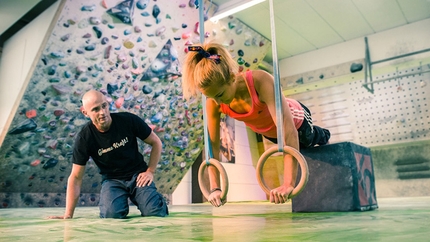
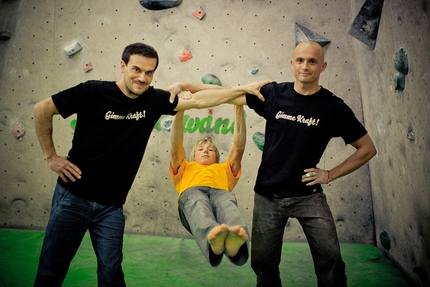
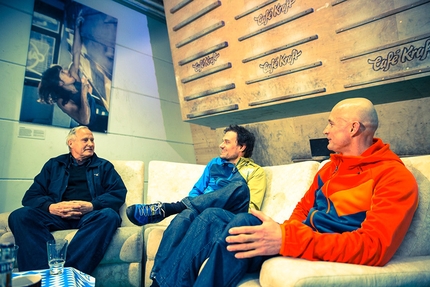
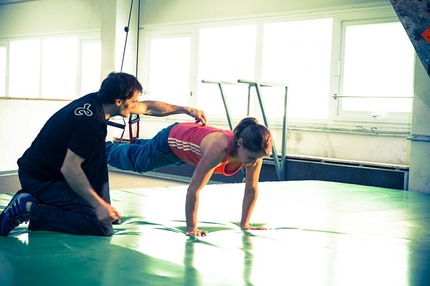
 See all photos
See all photos






















